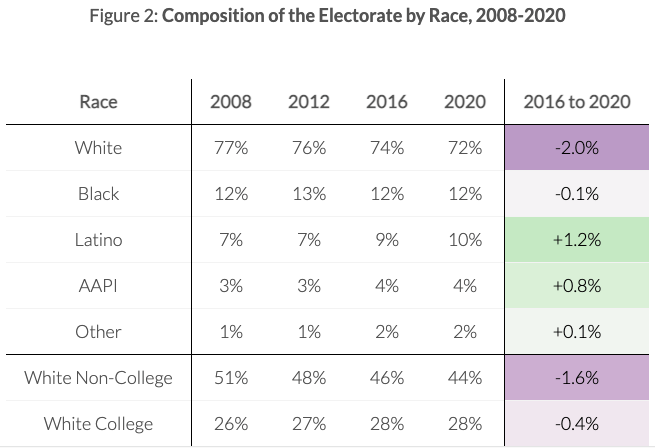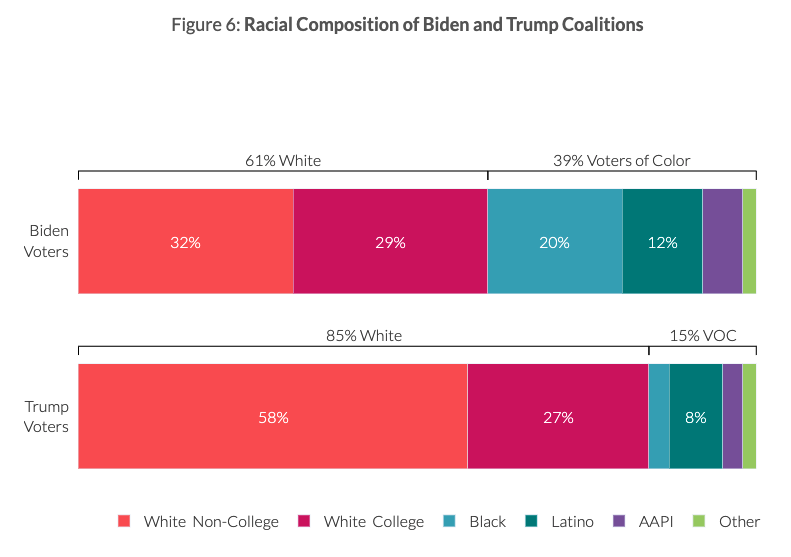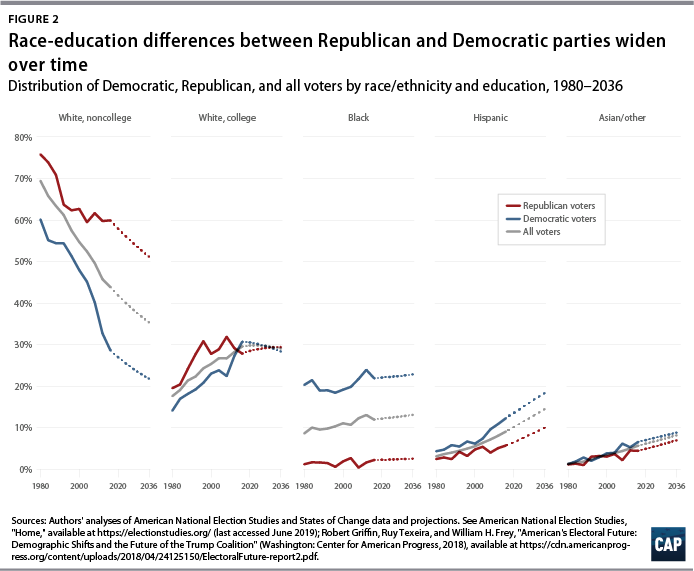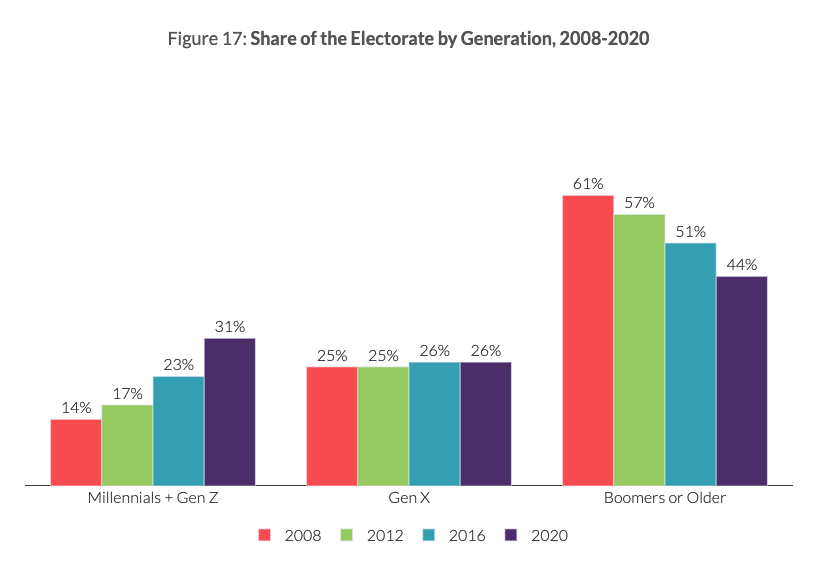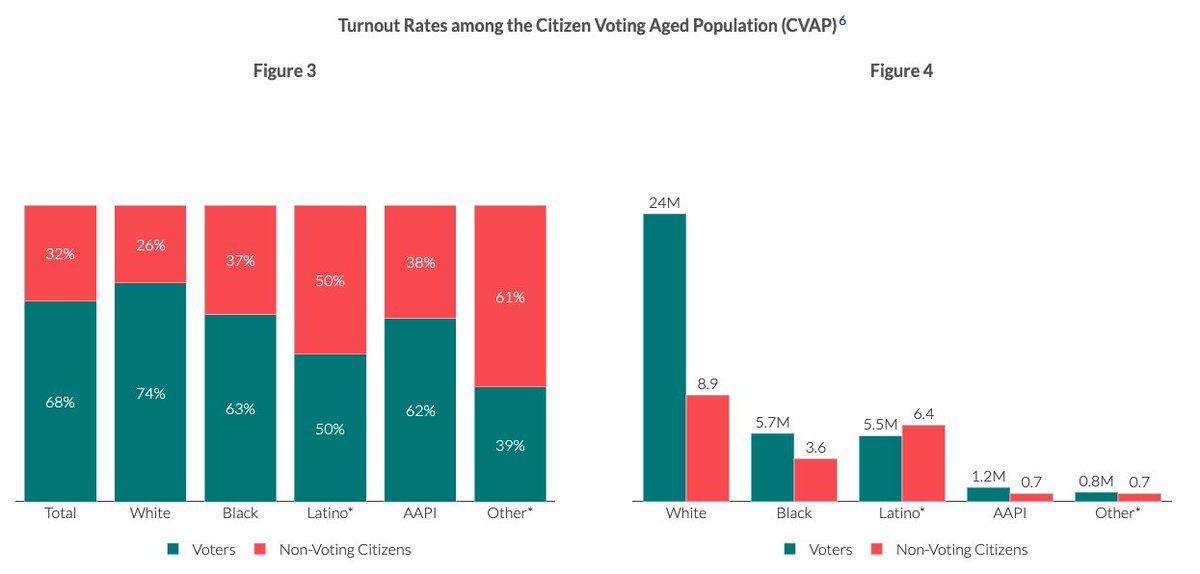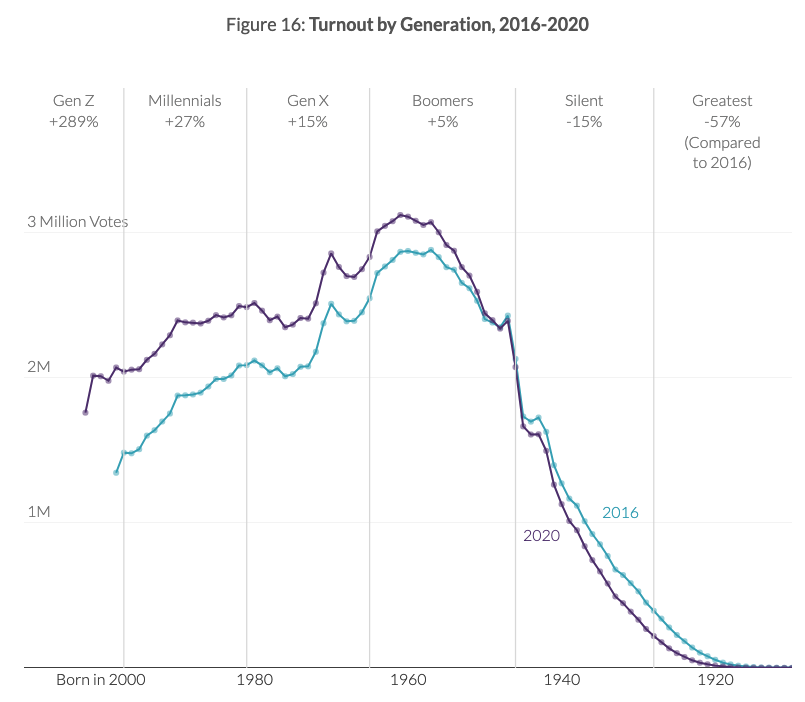Great report by @yghitza @jon_m_rob. I like this series and I hope they continue it in the future.
Some random thoughts! [thread] https://catalist.us/wh-national/ ">https://catalist.us/wh-nation...
Some random thoughts! [thread] https://catalist.us/wh-national/ ">https://catalist.us/wh-nation...
I hope this tumultuous election helps convince people that it& #39;s relatively easy to predict the demographic composition of future electorates. The reality is that is something REALLY needs to change to alter the long-term demographic trajectory we& #39;re on.
Something most people don& #39;t realize:
Despite rising educational attainment rates, white college voters are not growing. The rising attainment rate lets this group stay the same size even as the share of white voters shrinks, but they probably won& #39;t grow much going forward.
Despite rising educational attainment rates, white college voters are not growing. The rising attainment rate lets this group stay the same size even as the share of white voters shrinks, but they probably won& #39;t grow much going forward.
Coalition analysis is always interesting and the big story is how much whiter/white-noncollege GOP voters are.
Another way to think about the differences:
You& #39;d have to go back to the 1980s to find a Democratic coalition that was as white as the 2020 Republican coalition.
Another way to think about the differences:
You& #39;d have to go back to the 1980s to find a Democratic coalition that was as white as the 2020 Republican coalition.
Still the case that Boomers make up a substantial portion of the electorate.
Something people don& #39;t intuitively understand but this figure makes clear: generational drop-off is quite dramatic as cohorts get older - far steeper than the ascent.
Something people don& #39;t intuitively understand but this figure makes clear: generational drop-off is quite dramatic as cohorts get older - far steeper than the ascent.
I& #39;d love to see this figure with Boomers broken out into its own category.
My own work suggests that Millenials + Gen Z making up the same share of voters as Boomers by the mid-2020s. It& #39;s a symbolic shift that& #39;s just around the corner.
My own work suggests that Millenials + Gen Z making up the same share of voters as Boomers by the mid-2020s. It& #39;s a symbolic shift that& #39;s just around the corner.
AAPI turnout running even with Black turnout is definitely on the list of "Things I would not have predicted". It& #39;s a dramatic change and, if it holds going forward, is important for how we think about the impact of a changing electorate.

 Read on Twitter
Read on Twitter